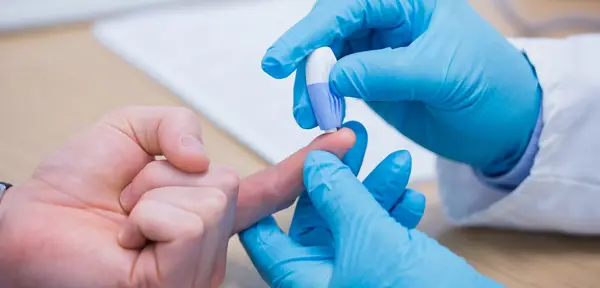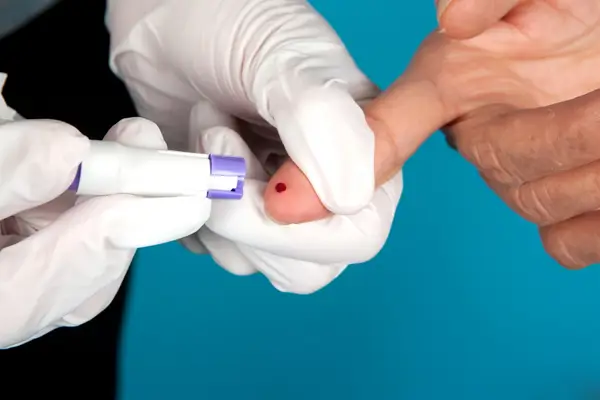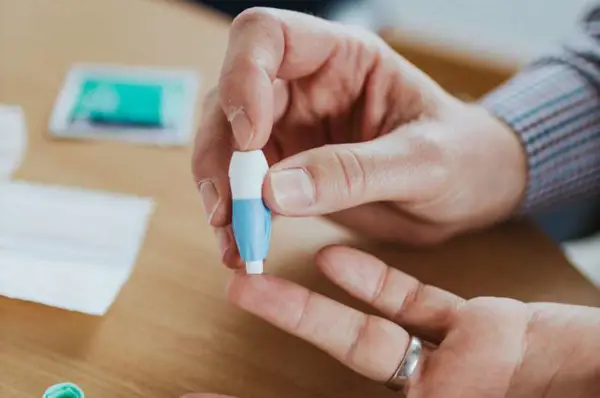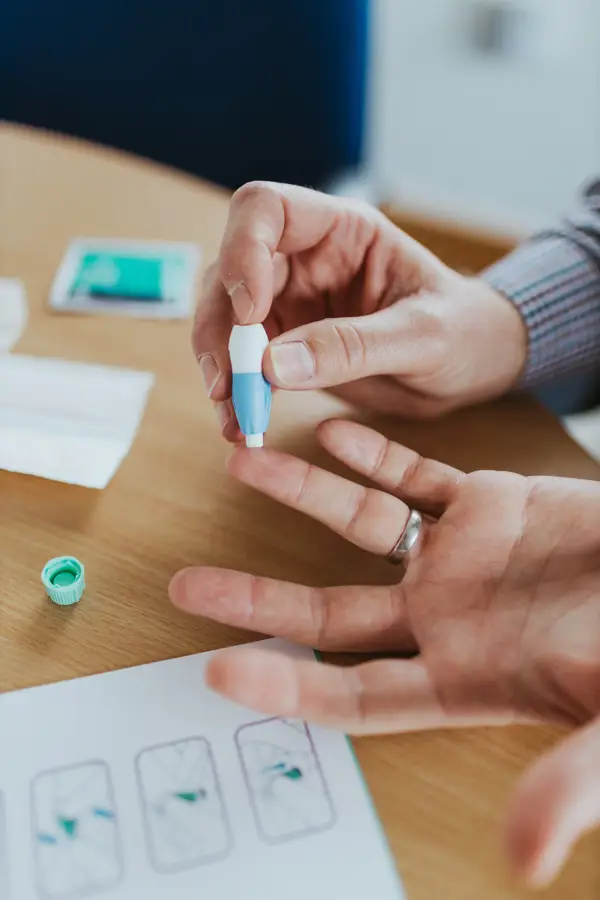Finger prick blood tests have become increasingly popular in recent years as a convenient way to monitor various health parameters. However, questions remain about the accuracy of these tests and their reliability in providing accurate results. In this article, we will explore the accuracy of finger prick blood tests and provide insights into their effectiveness.
Table of Contents
- What are Finger Prick Blood Tests?
- How Do Finger Prick Blood Tests Work?
- Accuracy of Finger Prick Blood Tests
- Factors Affecting Accuracy
- Benefits of Finger Prick Blood Tests
- Limitations of Finger Prick Blood Tests
- Recommendations for Using Finger Prick Blood Tests
1. What are Finger Prick Blood Tests?
Finger prick blood tests involve using a lancet to prick the fingertip and collect a small sample of blood for analysis. These tests are commonly used to measure blood glucose levels, cholesterol levels, and various other health markers.
2. How Do Finger Prick Blood Tests Work?
When a finger prick blood test is performed, a small amount of blood is collected and applied to a test strip or device. The device then analyzes the blood sample and provides a reading of the specific health parameter being tested.
Finger prick blood tests work by using a lancet to prick the fingertip and collect a small sample of blood. This blood is then placed on a testing strip or device that analyzes various markers in the blood, such as glucose levels or cholesterol levels. The results are usually displayed within minutes, making finger prick tests a quick and convenient way to monitor certain health conditions.
In terms of accuracy, finger prick blood tests are generally considered to be quite accurate when performed correctly. However, the accuracy can vary depending on the specific test being performed and the quality of the testing device. It's always important to follow the instructions carefully and consult with a healthcare professional if you have any concerns about the accuracy of your results.

3. Accuracy of Finger Prick Blood Tests
While finger prick blood tests are generally accurate, there is a margin of error that can affect the reliability of the results. Factors such as user error, equipment calibration, and environmental conditions can impact the accuracy of these tests.
Finger prick blood tests are a common and convenient way to monitor various health markers, such as glucose levels or cholesterol levels. These tests are typically quite accurate, with most studies showing a high level of correlation with traditional venous blood draws. However, it is important to note that there can be slight variations in results between the two methods. Overall, finger prick blood tests are a reliable and efficient way to track important health information.

4. Factors Affecting Accuracy
Several factors can influence the accuracy of finger prick blood tests, including the quality of the testing device, the skill of the person performing the test, and the consistency of testing conditions. It is important to follow the instructions provided with the test kit to ensure accurate results.
Finger prick blood tests are commonly used for quick and easy blood testing, but their accuracy can be influenced by several factors. These factors include:
- Quality of the testing device: The accuracy of a finger prick blood test can be affected by the quality of the testing device being used. It is important to use a reliable and well-calibrated device for accurate results.
- Proper technique: The way the blood sample is collected and handled can also impact the accuracy of the test. Proper technique, such as ensuring a an adequate blood sample is collected and avoiding contamination, is crucial for reliable results.
- Health conditions: Certain health conditions, such as anemia or dehydration, can affect the accuracy of finger prick blood tests. It is important to consider any underlying health conditions that may influence the results.
- Timing of the test: The timing of the test in relation to food intake or medication use can also impact its accuracy. It is important to follow any instructions provided for fasting or specific timing of the test.
By considering these factors and ensuring proper procedure, the accuracy of finger prick blood tests can be optimized for reliable and informative results.

5. Benefits of Finger Prick Blood Tests
Despite the potential for inaccuracies, finger prick blood tests offer several benefits, including convenience, affordability, and the ability to monitor health parameters at home. These tests can provide valuable information for managing various health conditions.
- Convenience: Finger prick blood tests can be easily performed at home or on the go, making them a convenient option for monitoring health.
- Quick Results: These tests provide fast results, usually within minutes, allowing for immediate insight into one's health status.
- Less Invasive: Unlike traditional blood draws that require venipuncture, finger prick blood tests are less invasive and can be less intimidating for individuals.
- Cost-Effective: Finger prick blood tests are often more affordable than traditional lab tests, making them a cost-effective option for routine health monitoring.
- Accuracy: Despite their small sample size, finger prick blood tests can be highly accurate when performed correctly by trained professionals.
Overall, finger prick blood tests offer a convenient, quick, and accurate way to monitor health status without the need for a traditional blood draw.

6. Limitations of Finger Prick Blood Tests
While finger prick blood tests how hiv they are not always as accurate as traditional venous blood tests performed in a medical laboratory. Additionally, certain health conditions or medications may affect the results of finger prick blood tests.
Finger prick blood tests are a common and convenient method of testing blood sugar levels, cholesterol levels, and other health markers. However, there are limitations to the accuracy of these tests.
One limitation is the size of the blood sample obtained from a finger prick. The small amount of blood collected may not provide a representative sample of the overall blood composition, leading to potential inaccuracies in test results.
Additionally, factors such as the timing of the test, the technique used to collect the blood sample, and external factors like temperature and humidity can all impact the accuracy of finger prick blood tests.
It is important to note that while finger prick blood tests can be a useful tool for monitoring certain health markers, they may not always provide the most accurate or reliable results. For more precise testing, it may be necessary to consult with a healthcare professional and undergo more comprehensive blood tests.

7. Recommendations for Using Finger Prick Blood Tests
To ensure the accuracy of finger prick blood tests, it is important to carefully follow the instructions provided with the test kit and to monitor for any changes in test results over time. Consulting with a healthcare professional can also help ensure the reliability of the test results.
- Always follow the instructions provided by the manufacturer for obtaining and using the finger prick blood test kit.
- Make sure to thoroughly wash your hands before collecting a blood sample to ensure accuracy.
- Use the lancet provided in the kit to prick your finger and collect a small drop of blood on the test strip.
- Ensure that the test strip is inserted correctly into the meter to obtain accurate results.
- Wait for the recommended amount of time for the test to process before reading and recording the results.
- Consult with a healthcare professional if you have any concerns about the accuracy of the finger prick blood test results.
- Store the test kit in a cool, dry place and check the expiration date before using to ensure accurate results.
While finger prick blood tests can be a convenient way to monitor your health, it's important to remember that they may not always be as accurate as traditional blood tests conducted in a medical laboratory. It's recommended to follow these guidelines to ensure the most accurate results possible.

Key Takeaways
- While finger prick blood tests are convenient, they may not always provide the most accurate results.
- Factors such as user error and equipment calibration can impact the accuracy of finger prick blood tests.
- Consulting with a healthcare professional is recommended when interpreting the results of finger prick blood tests.
FAQ
Q: Are finger prick blood tests as accurate as traditional venous blood tests?
A: While finger prick blood tests can provide valuable insights into health parameters, they may not always be as accurate as venous blood tests performed in a medical laboratory.



Recent Comments